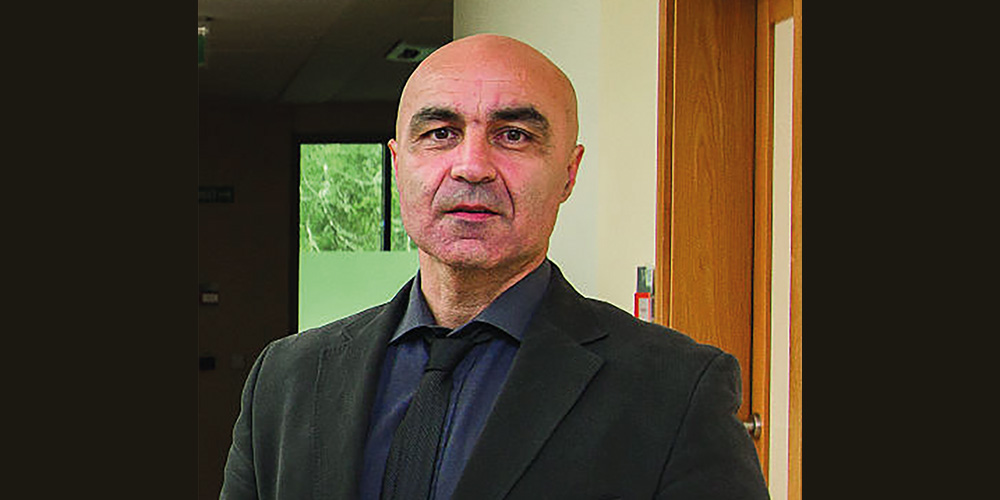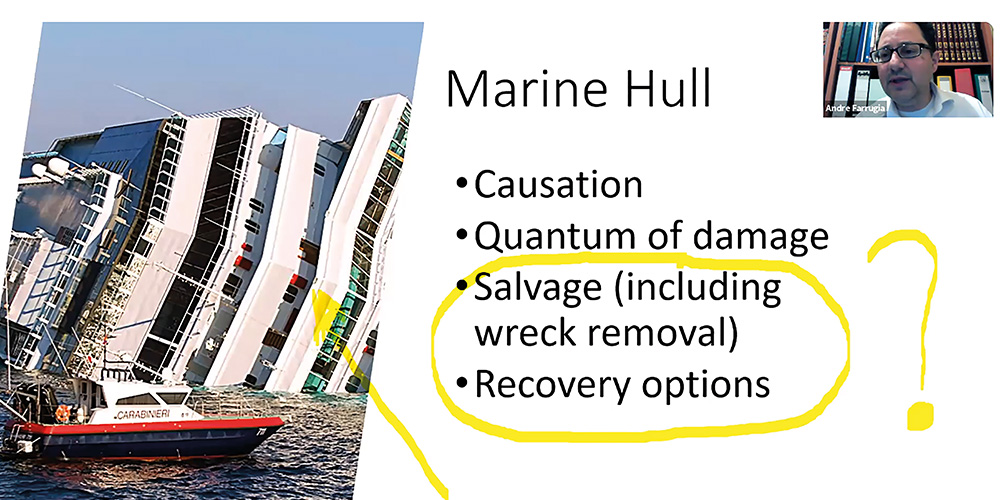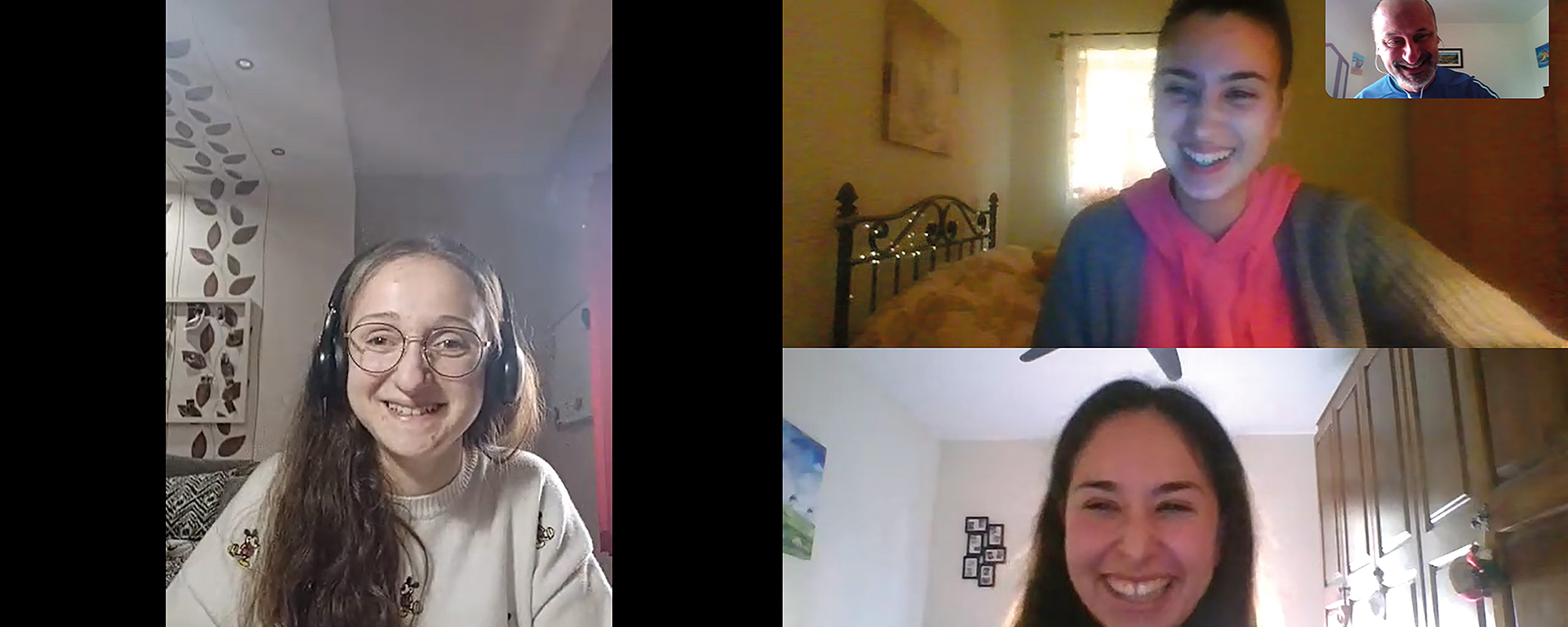COVID-19 pandemic containment measures pushed lecturing and studying to home environments. Some academics appreciated it more than others – they share their experience with editor Daiva Repeckaite.
It happened so suddenly. After years of preaching the benefits of digital lecturing, Prof. Matthew Montebello (Department of Artificial Intelligence, University of Malta [UM]) found himself many people’s favourite consultant almost overnight. ‘I’m over the moon that finally all academics have to revert to it, and I hope that at least some of them convert and start employing more digital media to teach,’ he says. He does not mind being flooded with pleas for help.
‘I have been employing the Web as a resource during my lectures since 1999,’ Montebello shares. ‘In 2014, I decided to switch completely. Having said that, I still enjoy face-to-face interaction and strongly believe that nothing can beat a well-prepared, finely executed, and dynamic-interactive live physical session.’ He adds that the current virtual learning environment was built as a repository medium rather than as a fully fledged digital teaching experience. ‘An upgrade or a complete overhaul is direly needed,’ he concludes.

During these six years of online teaching practice, he has used the option to store recorded sessions for when the time comes to repeat them. This does not mean that it is enough to record lectures only once. ‘I realised that they need adjusting and updating, as every year I find myself adding new information and experimenting with new stuff I want to share with students. A lot of work goes into keeping material up-to-date and ensuring optimal use of the medium.’
‘At the same time, it brought much more satisfaction to my career. The individual feedback [from students] increased, as the electronic medium provides a plethora of ways to communicate, and thereby enhances the learning process,’ says Montebello.
I’m over the moon that finally all academics have to revert to it, and I hope that at least some of them convert and start employing more digital media to teach.
For academics wishing to follow in his footsteps, Montebello suggests rethinking the whole pedagogical approach before starting to adapt the actual material. ‘When all you know is a hammer, then everything looks like a nail. But employing a specific tool for a specific job is very important. Do not fall into the mistake of using a tool you are comfortable with to perform all you need to do while teaching,’ he warns.
Dr Charlene Vella, who shared her online teaching story with Newspoint (UM), remembers, ‘I felt awkward when I was suddenly getting an intimate view of my students in their homes and rooms but […] online teaching also gave the students a peek into my world as a working parent.’
To help colleagues with digital pedagogy, Montebello created a Facebook group for academics. ‘The main principles behind digital pedagogies are mainly what I call affordances that the digital medium has provided us as educators. We are not bound any more by the walls of the classroom, or time, or the whiteboard or projector.’ Digital resources are accessible anywhere, anytime. They allow learners to make use of different media. Peers and their tutor are connected by feedback, comments, and discussion. Group work is made even easier, fostering collaborative intelligence. In Montebello’s view, the switch should also pressure academics to eliminate ‘traditional summative exams, which is an unnatural and non-representative way of capturing knowledge acquisition.’
We are not bound any more by the walls of the classroom, or time, or the whiteboard or projector.
The IT expert has also helped colleagues with specific tools and technical aspects. ‘For example, identifying a useful functionality like “share screen” or “common whiteboard” and justifying its pedagogical value drives the point home even more strongly,’ he says. Technical assistance included security concerns, particularly associated with Zoom – a video conferencing tool which reportedly fails to encrypt conversations and is not safe from hacker attacks.
‘Tool developers provide ways and means of how to avoid or curb such breaches, but these are not enabled by default,’ Montebello says. ‘Pointing out how to set the correct parameters within the digital tool to avoid such mishaps is very important. For example, in one case some students were changing their visible names during a synchronous session – either just to be funny or to mask their identity and interrupt the educational process.’ Montebello advised the academic to find a setting that would prevent name change and ‘the entire problem disappeared’.
Finally, many had concerns with going ‘on the record’. ‘Should they go live or should they record, or maybe a mixture? I strongly believe that a synchronous live session is more effective than a recorded one. I would still record the live session just in case students want to revisit or have missed it completely. As an educator I mess up in a physical class sometimes, so why should my online performance be flawless?’ Montebello encourages.
‘Another reason why recorded sessions are not as effective as real-time ones is because in a synchronous session learners know the academic is there waiting for them, similar to a physical classroom. If a recorded session was posted online for learners to go through at their convenience, the chances of not following it at all are greater.’
He hopes that colleagues had a positive experience. ‘I’m a strong believer and an advocate of [digital lecturing] practices,’ he says. This lockdown has sped up the shift to digital media as a learning environment, and some of these practices are there to stay.
Prof. Godfrey Baldacchino, Pro-Rector and Professor of Sociology
Necessity is the mother of invention. Confronted with the need to supervise three undergraduate students in Sociology as they completed their dissertations, I realised that there may be value in meeting them together to create a student-student dynamic. The experiment worked beautifully, and the students have demanded a second and a third such ‘virtual encounter’. They have benefitted by listening to each others’ challenges, proposing solutions, and suggesting ‘best practices’. Supervision has thus morphed into a tutorial of sorts.

Andre Farrugia, Assistant Lecturer, Department of Insurance
The online lectures were an invaluable replacement of the classroom sessions, so much so that the students received the same service irrespective of the method. The Zoom live sessions were interactive, with students prompting questions as we went through the material using a PowerPoint presentation. Those who would usually shy away from asking questions in class have now had the opportunity to do so discreetly through chat.
I think the COVID-19 pandemic has forced us into using electronic systems and now that we have tried and tested these, I really do hope we can keep using these methods in situations where we think they are more effective. My idea would be to hold all lectures online, then every two to three weeks the students would come together for team projects, presentations, debates, or tutorials.
Prof. James Sater, Associate Professor at the Department of International Relations
Before the pandemic, online teaching seemed to me like a futuristic idea that would never be able to replace traditional classroom interactions. Online teaching tools were only good for giving assignments and basic communication. How wrong I was! From the first online lecture, I realised how easy it is to talk to students and teach using PowerPoint slides. I also found that getting students to share their points of view through their camera and microphones is easy, and it seemed like they were much more engaged. This may be because of the immediate experience of seeing me or the slides that I use on their screens, or because they are less distracted by their classmates.
It has also become simple to use online material during the lecture, or real resources such as books that are in my shelf unit behind my desk. No messy fiddling with Wi-Fi connections, or my less-than-perfect iPad with limited functionality. In short, the online teaching experience is as productive as the classroom experience.
Hadrian Joseph Sammut, visiting lecturer at the Department of Library Information & Archive Sciences
Isn’t it rather ironic to lecture from behind the very same screens that were, until recently, perceived as a challenge to classroom interaction? There is a common misconception that classroom teaching is a passive form of information consumption with a largely captive audience. Those ‘in the know’ (the lecturer) merely transfer their knowledge to those willing to listen – the students. Against this fallacy, many assume that the recent COVID-19 outbreak and self-isolation have merely pushed us to use technology as the solution to the lack of student engagement.
In my view, technology is a tool and a channel that supports the right environment for quality teaching. The modern lecturer should strive to be part-tutor, part-storyteller, part-actor. Additionally, he/she needs to act as a mentor, share real-world experiences, and participate in a joint journey of continual discovery. It is not just a question of drawing distracted students back into the virtual classroom fold, but more importantly, how can you engage them when all you can see are static images and muted microphones? With the passing of time, we will adapt better and modify teaching behaviours, but distance teaching will, for the foreseeable future, remain a relatively inferior type of pedagogy.





Comments are closed for this article!